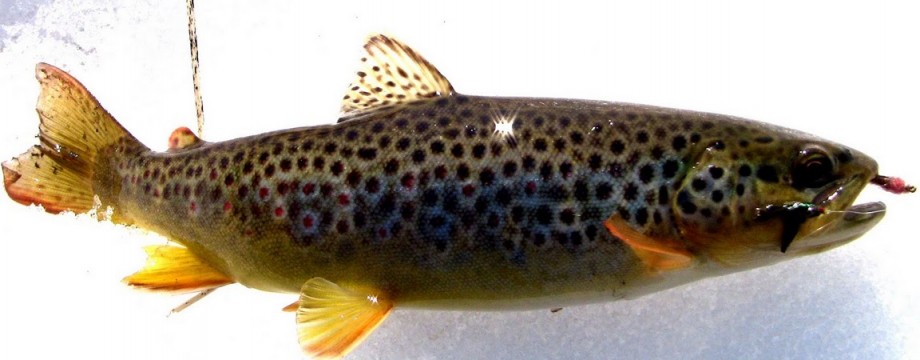If you’re one of the many who are just getting into the sport of fly fishing you may have a lot of questions regarding rigging. Flies, leaders, lines, rods, and reels all vary greatly depending on many factors: species, water, and even weather will all dictate what rod, line, leader and fly you will choose. I’m gonna try to break down the two most popular methods and the tackle used for chasing migratory trout in the Great Lakes region: The downstream swing and the dead drift.
The downstream swing is the more traditional way of fishing for steelhead and salmon. This technique is defined by casting down and across the river allowing the current to pull your fly from the opposite bank at a steady speed back toward the bank you’re fishing from. The two most important factors in this presentation are the speed and depth of the fly. Migratory fish are not in the river to feed therefore they don’t want to chase down a fly that is swimming too quickly. The depth of your presentation is determined by the speed, temperature, and depth of the water. Water temperature is also a major factor in determining how active fish are. The general rule being the colder the water the slower the fish, and of course warmer water = more aggressive fish. So you should adjust the speed of your fly accordingly. When water temps are above 55 degrees fish are more willing to move to a fly near or even on the surface. Fishing dry flies with the downstream swing is no different than fishing wet flies, except you can visibly see the fly waking across the surface of the water. When water temps are below 55 degrees fish slow down and prefer you to put the fly right in front of their face near the bottom of the river. There are many ways to achieve the right depth when swinging flies. If water temps are up and fish are active I would typically start with a floating line and an un-weighted fly. To go deeper I would next change to a weighted fly. If I need to get even deeper I would then switch to my sink tips and change flies accordingly to find the right speed and depth I feel the fish might respond to. Fly rods in 6-9 weight will work for these huge trout. Two handed rods make this technique more enjoyable on large rivers. As for reels, I believe that if it stores the proper line and balances you rod it will do. Flies with migrating fish don’t have to imitate anything specific. Fish that live in the ocean or great lakes that move into rivers are not familiar with the environment or the forage in the river. That doesn’t mean they wont eat crayfish or goby’s. It just means they’ll eat 5 inches of bright pink rabbit fur!! What does that imitate? good question. The answer… it doesn’t matter. When selecting flies for steelhead or lake run brown trout focus more on size and color than the actual pattern. I follow the old saying “the fly that catches the most fish is the one you fish the most”. Fish with confidence. After many hours or perhaps days of not catching you can start to lose hope. You have to believe they are out there. If you swing it they will come.
The other technique I’ll explain a bit is the dead drift. This is where your fly drifts naturally in the current with no action or manipulation from the line or float. It may require some mending of the fly line to help your fly move naturally in the current, but the idea is to not move the fly itself. The setup is quite basic. Usually it consists of and egg or nymph pattern tied on a heavy wire hook. About 12 to 20 inches above the fly add sufficient split shot to get your fly near the bottom. Then above the shot you put a float/strike indicator/bobber; whatever you want to call it. Adjust the float accordingly to depth of the water. When fishing this rig there are a few pivot points in you leader that become a real chore to manage if you’re false casting. To minimize tangles I strictly roll cast when fishing with the fly/lead/float rig. This presentation is really effective in cold water conditions and in tight quarters where there’s not much room for swinging. Fly selection: for lake run trout its hard to beat an egg fly. Assorted colors and sizes will help you “match the egg hatch”. For both presentations I’ll use a 12lb leader with tippet ranging from 0x-3x depending on water clarity. I usually start on the heavy side and will switch to lighter tippet if I’m not catching anything. For the dead drift I use a leader roughly the length of my rod and for swinging I use about a 3-6 foot leader when fishing sub-surface. If waking a dry fly I will use a 9-12 ft leader.
There’s always more to learn but I hope this helps clear some things up for some of the new guys on the water. If anyone has any questions or anything I can help with shoot me an email.

